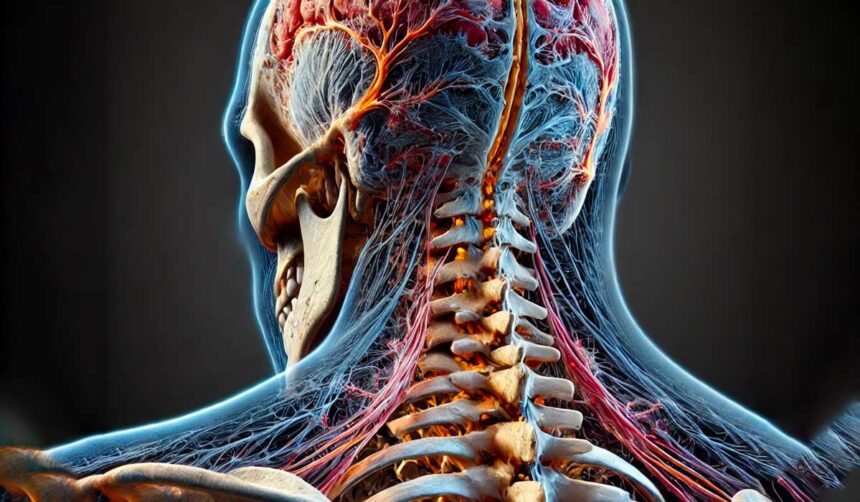As I reflect on my journey pioneering the field of Neuromyofascial Science, it’s clear that our understanding of pain and its treatment is on the cusp of a transformation. The concept of Spinal Concussion Syndrome (SCS), which I introduced, underscores the intricate relationship between past spinal injuries, accumulated scar tissue, and persistent pain symptoms. My mission has always been to dive deeper than the conventional symptom-management approach, aiming instead to identify and treat the underlying causes of complex pain syndromes. This narrative is not just about medical innovation; it’s a personal commitment to offer sustainable recovery solutions, drawing on my comprehensive research and clinical experience to illuminate the path toward healing for those afflicted by chronic conditions
Illuminating the Path: Pioneering Treatments for Spinal Concussion Syndrome
What is Spinal Concussion Syndrome (SCS)?
I coined the term Spinal Concussion Syndrome over a decade ago to describe how individuals suffer symptoms similar to post-concussion syndrome. In SCS, sufferers usually have a history of past spinal injuries such as car accidents or sports injuries.
Symptoms and Causes
The symptoms of post-concussion syndrome—headaches, ringing in the ears, dizziness, and visual problems—originate from accumulated high-density scar tissue developing around the spine and skull. This scar tissue causes spinal and craniocervical junction compression injuries, as well as referred pain from the scar tissue itself.
In SCS, sufferers usually have a history of past spinal injuries such as a car accident or sports injury.
Advanced Treatment and Recovery
With advanced interventional treatments and specialized targeted exercises designed to help remodel the scar tissue and decompress spinal segments, patients with otherwise permanent catastrophic pain syndromes can make a good or even complete recovery.
Applications Beyond Spinal Injuries
These new technologies are crucial for spinal and head injury patients, but also benefit those suffering from chronic migraines, tinnitus, vertigo, TMJ, facial pain, frozen shoulders, and even Parkinson’s and multiple sclerosis disorders.
In the realm of chronic pain management, understanding and effectively treating conditions like Spinal Concussion Syndrome has been both challenging and rewarding. My dedication to neuromyofascial science has propelled the development of groundbreaking therapeutic interventions and emphasized the importance of a personalized, patient-centered approach to care. The advancements we’ve made offer more than just hope—they represent tangible paths to recovery for individuals suffering from a myriad of pain syndromes. As we continue to push the boundaries of what’s possible in pain treatment, I am inspired by the resilience of my patients and remain committed to improving their quality of life through innovative, non-surgical solutions. Together, we are not just facing pain; we are overcoming it.
Medical Disclaimer:
The information provided in this article is for educational and informational purposes only and is not intended as a substitute for professional medical advice, diagnosis, or treatment. Always seek the advice of your physician or another qualified health provider with any questions you may have regarding a medical condition or treatment and before undertaking a new health care regimen, regardless of your location. Never disregard professional medical advice or delay in seeking it because of something you have read on this website.
AI Disclaimer:
The images and abstracts featured in our blog posts are generated using artificial intelligence. While we strive for accuracy and relevance, there may be occasional discrepancies or errors. We appreciate your understanding and encourage readers to consider the context and intent behind these AI-generated elements.




